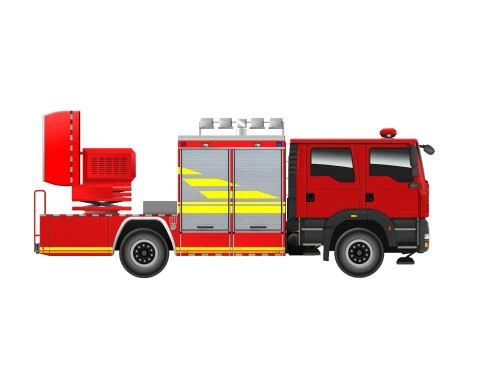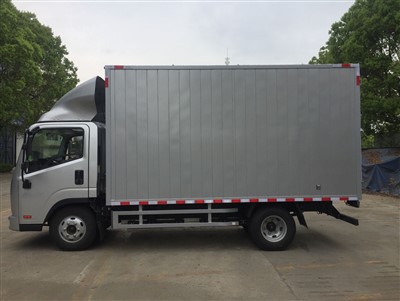ASL for Truck: A Comprehensive Guide

Introduction
American Sign Language (ASL) is an essential communication tool for the deaf and hard of hearing communities. It is rich in gestures and symbols that convey meaning beyond the spoken word. This article will explore the use of ASL in the context of the trucking industry, providing a comprehensive guide on how to communicate effectively using ASL with truck drivers, dispatchers, and other industry professionals. We will cover essential signs, practical examples, tips for learning ASL, and frequently asked questions. Whether you are new to ASL or looking to enhance your skills, this article will serve as a valuable resource.
Understanding ASL in the Trucking Industry
ASL has become increasingly relevant in various fields, including the trucking industry. It facilitates communication on the road, improves safety, and fosters inclusivity in teamwork. Here, we will delve into the significance of ASL in trucking, focusing on its practical applications.
Importance of ASL for Trucking Professionals
ASL can play a vital role for trucking professionals to ensure effective communication, especially in areas where traditional verbal cues may not be effective. Key benefits include:
- Improved safety on the road
- Enhanced teamwork between drivers and support staff
- Increased inclusivity for deaf and hard of hearing professionals
- Better customer service in logistics and delivery
Basic ASL Signs Related to Trucking
Learning essential ASL signs can help you communicate effectively in the trucking industry. Below are some fundamental signs that every trucking professional should know:
Common Trucking Signs
| ASL Sign | Description | How to Sign |
|---|---|---|
| Truck | Gesture representing a truck | Make a ‘T’ shape with your dominant hand, mimic rolling wheels with the other hand |
| Driver | Indicates a driver or operator | Hold both hands in front of you as if gripping a steering wheel |
| Load | Refers to the cargo being transported | Use both hands to signify lifting a weight |
| Road | Symbolizes the roadway | Use flat hands with palms facing downward, slide them apart |
| Stop | Used to indicate a halt | Make a ‘flat’ hand with your palm facing towards the other person |
| Turn | Indicates changing direction | Gesture with one hand in a circular motion |
Building Practical Vocabulary
Expanding your vocabulary is crucial for effective communication. Here are additional words relevant to the trucking industry:
- Delivery: Sign by mimicking handing over a package
- Fuel: Gesture by holding an imaginary fuel pump
- Safety: Cross your wrists in front of your chest
- Help: Raise both hands, palms up, in a giving gesture
Practical Examples of ASL in Trucking Scenarios
Now that we’ve covered basic signs, let’s look at practical examples where ASL can be utilized effectively in different trucking scenarios.
Communicating with Dispatch
Effective communication with dispatch is crucial for smooth operations. Here’s how ASL can be used:
- When a driver is lost, they can sign “Help” and use the sign for “Road” to indicate their need for directions.
- If a driver has reached their destination, they can sign “Delivery” and then “Stop” to communicate their arrival.
Team Safety Briefings
During safety meetings, using ASL can help engage all team members, including those who are deaf or hard of hearing:
- Use signs like “Safety” and “Help” to discuss best practices.
- Gestures representing “Turn” and “Load” can clarify instructions.
Customer Interactions
In customer service scenarios, ASL can help provide an inclusive experience:
- When greeting customers, sign “Hello” and “Truck” to identify yourself and your role.
- While discussing delivery, signs such as “Load” and “Safe” can reassure customers about their shipment.
Tips for Learning ASL

Learning ASL can be an enriching experience, both personally and professionally. Here are some effective tips to help you on your journey:
Utilize Online Resources
There are various online platforms offering ASL lessons, videos, and tutorials. Websites and apps like ASLPro, SignSchool, or YouTube channels dedicated to ASL learning are great places to start.
Enroll in Local Classes
Joining a local ASL class can provide hands-on experience with certified instructors, which is valuable for learning the nuances of the language.
Practice with Peers
Regular practice with peers is crucial. Organize ASL meetups or find online communities where you can practice real-life scenarios related to trucking.
Immerse Yourself in ASL Culture
Engaging with the deaf community can enhance your understanding of ASL and its applications. Attend events, workshops, or local proceedings where ASL is used.
Advanced ASL for Trucking Communicators
Once you have mastered the basics, consider introducing advanced terms and contextual signs related to trucking operations:
Understanding Signs for Vehicle Types
It’s beneficial to know signs for various vehicle types, including:
- Refrigerated truck: Mimic the action of a cooling mechanism
- Flatbed truck: Use hand gestures to flatten the back of the truck
- Box truck: Indicate the shape of a box with your hands
Negotiating Contracts and Agreements
In a business context, understanding the signs for common contract terminology can enhance negotiations:
- Contract: Gesture holding a pen and signing on paper
- Agreement: Clasp both hands together
Maintaining Safety with ASL
Using ASL effectively can contribute significantly to safety practices in trucking:
Emergency Situations
In an emergency, having clear signs can save lives:
- Emergency: Raise both hands to show urgency
- Help: Use the helping gesture along with signs for specific dangers (like fire or accident)
Regular Safety Protocols
Make sure to establish and regularly use safety-related signs in your team:
- Sign for “Stop” at mandatory checkpoints
- Use “Safety” during safety drill exercises
Frequently Asked Questions (FAQs)
What is ASL, and why is it important in trucking?

ASL, or American Sign Language, is a visual language used predominantly by the deaf community. It is important in trucking for effective communication among drivers, dispatchers, and customers, ensuring inclusivity and safety.
How can I start learning ASL for use in the trucking industry?

Begin with basic signs relevant to trucking, utilize online resources, enroll in classes, and practice with peers. Engage with the deaf community for immersive learning.
Are there any specific ASL signs for different types of trucks?
Yes, there are specific signs for various truck types. It’s helpful to learn terminology related to refrigerated, flatbed, and box trucks for better communication in specialized scenarios.
Can I use ASL when communicating with deaf customers in the trucking industry?
Absolutely! Using ASL can facilitate effective communication with deaf customers, enhancing their experience and understanding during shipping and delivery processes.
Is it difficult to learn ASL?
Learning ASL can be challenging, but with consistent practice and dedication, many find it a rewarding and enriching experience that improves their communication skills.
What resources are available for learning ASL in a professional setting?
Many online platforms provide ASL tutorials and videos, while local community colleges often offer ASL classes tailored for professional contexts. Joining forums or organizations dedicated to ASL can also be beneficial.
Conclusion
The growing presence of ASL in the trucking industry emphasizes the need for effective communication in diverse environments. By learning key signs and implementing ASL practices, trucking businesses can foster safe, inclusive, and efficient interactions among all professionals. This guide serves as a foundational resource to embark on your journey of integrating ASL into your trucking operations.
